
|

Solomon Lodge No. 484 AF & AM
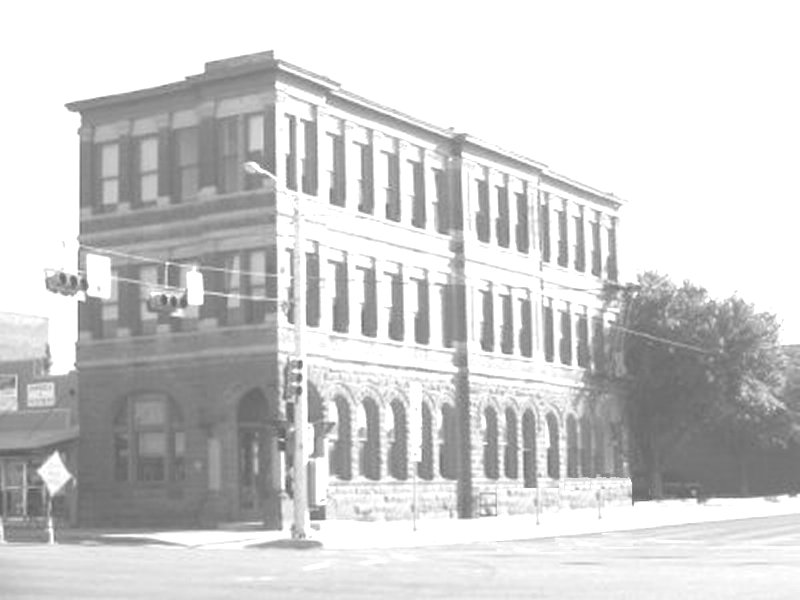 The Taylor Nation Bank Building In Taylorville, |
|
Page II | |||||||||
This Small Town Texas Mason's E-Magazine is not affiliated with any state Grand Lodge or individual Blue Lodge. It was created to enlighten, educate and entertain Masons and non-Masons alike and as title suggests, it does feature a small town Texas Masonic Lodge and a story of Texas Masonic history in each issue
A very sincere effort was made to avoid using any copyrighted material, without permission or giving credit to the author, in the creation of this web site. If you discover something that is yours, without giving you due credit, please let me know and due credit will be given or the item will be replaced.
Any material in this site may be used to increase the understanding of Freemasonry.
Story tools: |
Solomon Lodge No. 484 AF & AM
David Crockett - "You all can go to hell - I'm goin' to Texas!''
The Furniture: The Greater and Lesser Lights
If It Don't Rhyme Is It Still A Poem?
New Masons Drawn by Brotherhood, Not Myths
Masons Open Temple To The Public
Beamish Takes You Back To A Long-Lost Way Of Life
Cornerstone Ceremonies Have Long History
Shriners Closes Galveston Hospital
What do Younger Masons Really Want?
| ||||||||
|
Page V | ||
David Crockett "You all can go to hell - I'm goin' to Texas!''
From The Texas Mason
Crockett was the archetype of the American frontiersman, and was famous for his ability to shoot the flame off a candle at 100 yards. He once killed 105 bears in a single season, some with a knife.
After serving two terms in the state Legislature, Crockett was elected to the U.S. Congress in 1827, 1829, and 1833. Popular for his honesty and home-spun forthrightness, he loudly opposed President Jackson's mistreatment of the Indians. Following his defeat in the election of 1835, an angry Crockett told his Tennessee constituents, "You all can go to hell - I'm goin' to Texas!''
On February 8, 1836, Davy and his twelve "Tennessee Boys" rode into the Alamo. His tall tales and quick wit held the morale of the men high during the worst days of the siege. On the morning of March 6, as the Mexicans finally overwhelmed the Alamo garrison, Davy Crockett was among the last to die.
Proof that Crockett was a Mason is based mainly on the survival of his Masonic Apron, made for him by Mrs. A.C. Massie of Washington, D.C., during his tenure in Congress. Before leaving for Texas, he entrusted the apron to the sheriff of Weakley County, Tennessee, and it was inherited and preserved by the sheriff's nephew, E.M. Taylor of Paducah, Kentucky. The lodge at Weakley County, near the Crockett home, burned during the Civil War destroying all the lodge records.
| ||
|
From The Freemasons' Guide and Compendium
As with many Masonic words, they reflect earlier meanings. Here 'furniture' means 'that which is furnished' – a rather vague term that also meant equipment for a horse (saddle, girth, reins, bridle, etc). In the 1700s when lodges met in inns, the furnishings needed to be
The Antients took a less obvious view of the matter; to them the three great lights were the volume of sacred Law, the Square and the Compasses, while the three lesser lights were the candles of the Master and his Wardens. To the Moderns the VSL, the S & C were known as the "furniture" of the lodge; they are still often known in that way. Probably by the end of the century many of the Modern lodges had come to look at the matter differently, and we find the Lodge of Reconciliation, after the union of Antients and Moderns, adopting the Antient practice as to the great lights, and agreeing that the three lesser lights are situated in the east, south and west, and are meant to represent the sun, moon, and Master of the lodge.
In existing old lodges there must be a great diversity with regard to the positions of the candles and with regard to the customs associated with them. For example, in the Lodge of Love and Honour, No. 75, Falmouth, England, founded in 1751, the candle in the east is lit before the Master enters the lodge. The lodge having been opened, the Wardens approach the Master's light with their candles, light them, return and place them in position, and resume their chairs. The candles stand out on the floor, the candidate passing between them and the pedestals. | ||
|
Anyway, It's A Good Idea From The Rural Lodge AF&AM In Quincy MA, Newsletter
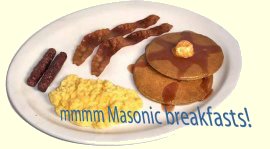
Do something adventurous.
It’s an option that’s open to very few people.
Most men stay with the same circle of friends.
Feed your mind and nourish your body.
You’re a Mason.
|
|
Page VI |
By Corky
|
|
Page VII | |
By Rachel Martin
After all, members themselves call Masonry "the craft." And the Masonic founders of America built the roads around the U.S. Capitol in the form of a five-pointed star – a pagan symbol.
Then there is that "seeing eye" pyramid on the dollar bill – a known Masonic symbol. Some conspiracy theorists have argued that the pyramid is evidence of a Masonic cabal within the U.S. government. (Historians pooh-pooh that idea. It's just a coincidence, they say.)
Although the reality of Freemasonry is much less mysterious, it's appealing to a younger generation.
The 'New' Masons
On a recent evening, about 100 elderly men gathered at the Scottish Rite Masonic Hall in Washington, D.C., for an annual ceremony honoring masons who've died in the past year.
The World War II generation that makes up the bulk of Freemasonry membership in the United States is dying at a quick rate. But now, a new generation of Masons is picking up the torch.
Alan Patterson is a member of Naval Lodge 4 on Pennsylvania Avenue in Washington, D.C. He and some of his Masonic brothers sit at a round kitchen table in the dining hall of their lodge. They joke about the rumors and speculation that have surrounded Freemasonry for generations.
"All the stuff you see on the Internet — from devil worship to sacrificing virgins — I joke, 'You know, we do have a couple of New York Yankees fans, but they're not really considered Satan,'" he says.
Unlike older Masons who joined because their fathers were members, Patterson is the first Mason in his family. During rituals, he and other officers wear large silver neckpieces, which they call their "Masonic bling."
While they discount the conspiracy theories, these Masons clearly enjoy them.
David Johnson, 36, is junior warden of the lodge. "It's not like we're sitting in here, polishing the Holy Grail every Thursday night when we meet," he says with a sarcastic grin. "We drink out of the Holy Grail, but we don't polish it. It couldn't take it — it's very old."
Johnson became a Mason at age 25. He has spiky salt-and-pepper hair and three small gold rings in each pierced ear. He gives a tour of the main lodge room. The walls are painted bright blue, and they're covered in Egyptian hieroglyphics and Masonic symbols. Johnson explains that a big blue letter G at the far end of the room does stand for God; but even more importantly, he says, in Masonry, G stands for geometry.
The Brotherhood
Masons describe their fraternity as a brotherhood that teaches moral lessons through allegory and secret rituals. It spells out a structured code that Masons are to live by – truth, honor and charity. Masons pledge to take care of one another and their families for life.
There are at least 200 Masonic charitable foundations or programs in the United States. They fund everything from hospitals to charter schools. Overall, Masons donate millions of dollars each year to charities.
It's not a religious organization, but Johnson says Masons have to profess a belief in a higher power.
"Masonically, we talk about God as the architect of the universe," he says. "It really doesn't matter how a brother defines his faith, as long as he believes in a deity."
That universality has put Masonry at odds with organized religion for centuries. The Roman Catholic Church has long considered Freemasonry to be an anti-Catholic cult.
But Alan Patterson, a church-going man himself, says all of that stuff about undermining religion is just bunk; at its core, he says, Masonry is something really simple.
"We get together, we turn the phones off, we turn the pagers off, we close the doors, and we dedicate ourselves to bettering ourselves as men," Patterson says. "It's quaint, but it's appealing to a younger group of people."
Changing Member Profiles
In its glory days in the 1940s and '50s, the Masons had 4 million members in the United States, and 50,000 lodges. Now, they have about 1.8 million members. But many lodges — including the Naval Lodge in D.C. — say their average age is going down. Why?
Mark Tabbert, 43, is the director of collections at the George Washington Masonic National Memorial in Alexandria, Va. Tabbert is the former grand master of his lodge in Massachusetts; he's also a Masonic history buff. In his office, a plastic action figure is propped on a bookshelf with a little piece of paper stuck to him; it reads "Masonic superhero." |
|
Page VIII | |
Continued From Page VII
"In the quest to be larger and to do more good and to have more fun," he says, "they let in a lot more people, and it dropped the standards of the fraternity."
He says the current renewed interest in Freemasonry has brought in men who take a more serious approach to the ritual than older generations did, and who want to tighten initiation standards and raise dues. But he says the fraternity must watch out for men who sign up because of misguided theories linking Freemasonry to "divine secrets."
"Once you get through the romanticism of a quest that doesn't exist, or foolishness about the Knights Templar or the Arc of the Covenant or the Holy Grail, you find out that there actually is a quest," Tabbert says. "And the quest is the inner journey, the self improvement, to be useful in society and improve yourself."
Masonic Treasures
While the Masons may not have any big secrets, they do have treasures – including the gavel that George Washington used to hammer in the cornerstone on the Capitol building in 1793. The head of the gavel is made from the same marble used in the original interior of the Capitol, the handle made from native American cherry wood.
It's one of the most treasured Masonic artifacts, guarded by a lodge in the Georgetown neighborhood of D.C. Longtime Mason Dean Klatterbach says the gavel represents a bridge to the past and to Washington himself, the quintessential American Masonic hero. It's a powerful connection for Klatterbach, who becomes visibly emotional when discussing the gavel.
"He still stands as a man of indisputable integrity," Klatterbach says of America's first president. "It's pretty nice to be associated with someone of that stature."
But for many new, younger members, Masonry's attraction lies less in historical icons and artifacts than in its sense of fraternity. Johnson, the junior warden of Naval Lodge 4, says what bonds Masons together is oral tradition: passing knowledge, experience and wisdom from generation to generation.
"It takes another brother to show you the way and take you down the path to get to the enlightenment that we offer," he says. | |
By Sue Ward
BY CHRIS STURGIS Mercer Lodge No. 50 of the reputedly secretive Free and Accepted Masons yesterday opened the doors to its temple in Trenton to the public. James J. Ross, district deputy grand master of the 15th Masonic District of New Jersey, told an audience of about 50 people the organization traces its roots to the highly skilled cathedral builders of the Middle Ages, and the Grand Lodge was formed in England in 1717, just as the ideas that led to the American Revolution were taking hold. The Masons opened their headquarters to the public as part of Trenton's annual celebration of its history known as Patriots Week. The tradition of secrecy emerged from guarding the construction principles as a way of restricting access to their livelihood, as would a trade union or craft guild, Ross said. The organization still uses the builders' tools, a compass and carpenters' square, as its symbols. Ross and Keith Bergman, worshipful master of the Hightstown-Apollo Lodge, explained the Masons' stand on inclusiveness of membership. Ross said Masons do not accept women as members, but women may join the affiliated Order of the Eastern Star and girls may join the International Order of the Rainbow. The Freemasons accept members of all ethnic backgrounds and religions, provided the candidate professes a belief in a deity. No atheists or agnostics are allowed, Ross said. Catholics are welcome, but their leaders have forbidden membership at various times, he said. "I'm not telling you who the Supreme Being is, just that you must believe in one," Bergman said. Ross and Bergman and other Masons led members of the public on tours of the temple, which has undergone a $2.2 million renovation with $800,000 in funding from the Garden State Historic Trust Fund. The Masons hope to recoup some of the cost by renting out the large first-floor lounge, which has abundant natural light, for banquets and other social occasions. Another first-floor room with red-gold woodwork will be opened to the public as a museum and library. Ross said the Masons raise money for charities -- the Shriners, for example, provide millions of dollars to care for children -- but they do not define themselves as a charity. To be a Shriner, one must first be a Mason. Freemasonry at its essence is a search for one's best and most enlightened self, through the symbols of stonemasonry, including the square, which symbolizes "square dealing" and honesty, Ross said. Ross' remarks touched on two recent films that showed Masonic symbols as clues in their plots, "The Da Vinci Code" and "National Treasure." Ross dismissed the novel "The Da Vinci Code" as a piece of light fiction that he devoured the way he would have a Hardy Boys mystery when he was a youngster. He said he loved "National Treasure" because the wealth-seekers discover, not the room filled with gold that they pursue, but the beauty of the American system, beginning with the first treasure map, written on the back of the Declaration of Independence. Ross said the story, which has Masonic symbols woven into it, is an allegory.
"We've got no great treasure of gold here," Ross said. "Believe me, I've searched the entire (Masonic) temple. The treasure is that we have this country that was left to us, not just by Masons, but our Founding Fathers."
|
|
Page IX | ||||||||
By Sue Ward
It's an amazing place when you consider that the majority of the exhibits were dismantled and transported to the museum to be rebuilt, brick by brick.
One of the most popular tourist attractions in the North East, more than 300,000 people each year visit to experience what life was like in this region in the mid-1800s to early 1900s.
During the February half-term holidays, admission at Beamish is being discounted to £5 per person. As this is the winter season, your visit will centre on The Town and tramway only, but that doesn't mean there isn't plenty to see and do. There's even more to see on a return visit in the summer; in all, there are 300 acres to explore.
The best way to start your journey back through time is by hopping aboard a Beamish tram. The tramway runs on a mile-and-a-half circuit of the museum, which will help you get your bearings.
You can have a sneak preview of the Collier Lamp Cabin, a new £1 million exhibit which will officially open in March. Some of the collection of safety lamps will be on display, with a costumed miner to explain just how vital lamps were and show how they were lit, cleaned, repaired and maintained.
You could then take a stroll along the cobbled streets of The Town watching the 'population' of Beamish pass by. Soldiers, sailors, and nannies with their wards can pass you at any time, all in authentic costume. At the western end of The Town, which represents a typical North East market town in the years leading up to the First World War, is a Victorian park with ornamental flower beds and a bandstand from Saltwell Park, Gateshead.
Ravensworth Terrace came originally from nearby Gateshead. These fashionable houses were built for professional people, and this is where you will find the home and surgery of a dentist, along with a solicitor's office. The dentist might even be on hand to show you how they extracted teeth back then – ouch! Those of a nervous disposition should move straight on to the music teacher's house.
At the end of the terrace is The Sun Inn, originally from Bishop Auckland, which dates back to the 1860s. You can enjoy a beverage here as the inn is licensed to sell alcoholic drinks during opening hours.
Next door is the Motor & Cycle Works, a typical town garage of 1913 with a showroom display including the magnificent, locally-built 1907 Armstrong Whitworth vehicle.
A visit to the sweet factory and confectionery is a mouth-watering must for all ages. Here the smell of freshly-produced sweets like parma violets, cough lozenges and sherbet dabs, add to the riot of colour in the shop. I dare you to leave without buying a bag of pear drops or black bullets.
The stationer's shop, printing works, solicitor's office, bank and livery stables are all working and mostly manned examples, including the Town Stables with its splendid Gelderlander carriage horses, which pull the carts and occasionally the tram. The Carriage House, complete with foreman's office and shoeing forge, holds a fine display of horse-drawn vehicles.
Finally, at the Masonic Hall, from Park Terrace in Sunderland, you can see inside a typical meeting place and find out more about the world of Freemasonry in 1913 as members gathered for an evening meeting of a craft Masonic lodge.
I always feel that the word 'museum' conjures up visions of dusty exhibits in dark rooms. This is living, breathing history of how people lived and worked in Victorian and Edwardian England.
Everything is shown in context, with costumed staff on hand to bring the past vividly to life. Perhaps they should change the name to The Beamish Experience – maybe a little sugar-coated, but none the less enjoyable for that.
|
|
Page X | ||
From The Groesbeck (Texas) Journal
Masons for across Texas converged on Groesbeck last Friday to ceremoniously level two cornerstones at the facility.
"This is a special time for this city and county," said David B. Dibrell, past grand master of the Grand Lodge of Texas. "And this is special for us. It's unusual for us to have the chance to level two cornerstones at one time."
Cornerstones and cornerstone ceremonies are part of architectural history.
The cornerstone of a building is the stone that lies at the corner of two walls and forms the corner of the foundation of an edifice. Upon it the alignment of the entire structure will rest. History records, from ancient times, great ceremony involving the cornerstone before construction began on the architect's design.
Records of the observance are found etched on clay tablets left by peoples of the ancient civilizations of Mesopotamia and Assyria. It was a ceremony marking a moment in time. Even today, when schools, churches or local government buildings are scheduled for construction, there are moments along the way to completion that are especially memorable.
One of the most beautiful and meaningful of those moments is when the fraternity of Freemasons conducts a rite similar to those recorded in history. The ceremony of symbolically leveling a cornerstone. It is performed with solemn ceremonies giving dignity to the occasion.
The cornerstone is usually a polished stone, found near the foundation, but not a part of the foundation, and high enough from ground level to be easily read. A cornerstone generally has carved upon it such things as the name of the owner, purpose of the structure, date of the building's erection and some- times other facts.
Commemorative or dedicatory stones are the stones most commonly placed by the Masonic fraternity today. They are not part of the structure of the building, but fit into a space left in the stone or brickwork. Generally, the placement of such a stone is the last act in the building and serves as a dedication of the building and a signal of its completion.
The medieval stone masons organizations; builders of the glorious cathedrals across Europe are, in fact, forerunners of modern speculative Masonry. References to cornerstones are found in various places in the Holy Bible in both the Old and New Testaments that indicate the antiquity of the cornerstone and its uses.
Because Freemasonry is non-sectarian and because Freemasonry is heir to the historical tradition of building, it is the appropriate organization to dedicate or symbolically level the cornerstone of a public or religious edifice. For this purpose Freemasonry provides a special ritual to govern the proper performance of that duty. Among the ancients, cornerstones were laid with impressive ceremonies.
The Masonic cornerstone ceremony, like most customs, has evolved over years of use.
The symbolism of the cornerstone, when duly laid with Masonic Rites is full of significance, which refers to its form, to its situation, to its permanence and to its consecration.
As to its form, the cornerstone must be perfectly square on its surfaces. To Masons, the square is a symbol of morality and truth. In the situation, the cornerstone will symbolically lie between the north, which Masons consider a place of darkness and the east, which Masons consider a place of light. Hence the northeast position of the cornerstone symbolizes the Masonic progress from darkness to light, from ignorance to knowledge. To permanence, the stone, when deposited in its appropriate place, is carefully examined with the necessary implements of operative Masonry which include the square, the level, and the plumb, themselves all symbolic in meaning.
The cornerstone is then declared to be "well formed, true and trusty." Lastly, the elements of Masonic consecration are produced and the stone is solemnly set apart by pouring corn, wine, and oil upon its surface, emblematical of the nourishment, refreshment and joy which are to be the rewards of faithful performance of duty.
Masons of the Grand Lodge of Texas are proud to continue the long time tradition of leveling cornerstones. Throughout Texas history, Masons have leveled cornerstones of schools, churches, local government buildings and public buildings. It is considered a great honor by Masons to perform this service in their communities.
Before requests can be considered there are certain guidelines which have come to define the role of Freemasonry in such ceremonies. For example, the building must be a public building such as a police station or school…or of sacred character such as a church. Another guideline is that buildings proposed for the laying of cornerstones must be constructed of brick, stone or concrete.
The cornerstone should be an actual stone, cubical in form, upon the fact of which should be carved the words "Leveled (or Laid) by the Grand Lodge of Texas, A.F. & A.M.," with the Masonic emblem and the year carved thereon.
|
|
Page XI | ||||||||||
By Richard Newbury
Religion has in fact historically treated speculation as either negative as attempting to second guess Providence by betting on future crops or on the other hand positive. For if Nature is the face of God then Nature is a legitimate, even obligatory, object of speculation as to where its bounty may be found and also speculative thought may also as reveal God's nature.
Here we celebrate the move from magic to science. Dr John Dee, Queen Elizabeth's [Elizabeth I] mathematician and mago viewed the heavens also to divine the astrologically opportune day for the Royal coronation. His successor at Court was Giordano
The Grand United Lodge overseeing the rapid spread of Freemasonry in Hanoverian England was founded in 1718, and unlike the Continental version, The Grand Orient, that Voltaire took back from his English exile to France, Freemasonry was, and is, deeply implanted in the Establishment with the Grand Master always a member of the Royal Family – in 1952 both George VI and the Archbishop of Canterbury were Masons; every regiment was also a Lodge. From the point of view of speculation, however what appealed to Voltaire was that at a Lodge Protestants, Jews, Muslims and yes Catholics could meet on equal terms and not just to share a divine architect but do business and thus speculate.
However for financial speculation one requires capital so as to “venture your capital for gain”. Capitalism requires bankruptcies for its smooth functioning so that “a fool and his money may be soon parted”. It is not money but capital against which more money may be borrowed and greater profits won or lost that is required. What has created this in England for over a millennium has been primogeniture and educating children of all classes away from home.
If the major asset – be it a small farm or a great estate – stays with the eldest male descendant, the other siblings – male and female - receive small bequests and houses. This created a very active real estate market from the beginning, with most of this property going outside the family or used as collateral. Property did not belong to a family – moral or amoral – but to individuals and to do with as they pleased. Speculation became endemic in the English psyche. This was reinforced because, if children of small farmers or great lords were educated in the households of neighbours, they ceased to think tribally, but rather individualistically and had other loyalties. Speculation – risking all for gain – is an individualistic trait.
For good or ill it is what has made England and the Anglosphere what they are today. It is what makes the Channel wider than the Atlantic.
|
|
Page XII | |||

The foundation stone was laid on St. Matthews day, 21st September 1446. The orientation is due east and west, marked out by the solar ray, according to the ancient tradition. A geometrical figure is usually used to regulate the proportions, and a double equilateral triangle is used in Rosslyn.
The height of the chapel is 40 feet 8 inches, breadth 34 feet 8 inches, Length 68 feet. There are thirty-two different forms of arch throughout the chapel, the horizontal arch over the side aisles connecting the pillars with the wall, are hollow stone hung with the aid of small iron rods onto a central wooden beam.
The famous 'Apprentice pillar' or 'Prentice Pillar', also referred to in 'An account of the chapel of Roslin' 1778 as the 'Princes Pillar'. On the architrave joining the pillar, the words in Latin mean 'Wine is strong a King is stronger,
On the three pillars standing between the east aisle and the east chapel is a choir of thirteen angels with musical instruments, representing the host of God. On the ribs of the groins (intersections) on the north and south sides are representations of various occupations in life which is also referred to as the 'Dance of Death'. On some of the other pillars are a series of carvings showing Issac on the alter with the ram caught by the horns, Abraham looking towards his son, Samson destroying the philistine lords, David killing the lion, the Prodigal son, the Crucifixion and a some that depict the history of the Roslin Family. Also of interest are the mason's marks on the individual stones, the use of which was rare even at the time of building.
Freemasonry
The chapel has long been famous for its possible connections to Freemasonry and its attendant rituals. This connection entered mainstream consciousness when named in the novel The Da Vinci Code for its (possible) links to the Holy Grail. Despite the fictitious nature of this work, its influence has been considerable. The Scottish NGO The Friends of Rosslyn, which own the land surrounding the Chapel and the Rosslyn Chapel Trust which administers the Chapel, have both published a number of books and literature on the Chapel.
Certainly the Chapel is used by the a modern group calling themselves Knights Templar (possibly a Masonic organization) for 'investiture' ceremonies, and because of its connection to one of the more famous freemasons (William Sinclair) and also due to the Masonic architecture and symbolism featured on the Chapel walls, many Freemasons from all over the world visit it. Certain points in its architecture are quite indicative of a Masonic, and Templar, connection.
American voyages
In addition to the theory that the Chapel was used by Freemasons and Knights Templar is the claim that those groups, stationed at Rosslyn Chapel, journeyed to North America and back before Christopher Columbus. This claim is based on several points:
|
|
Page XIII |
Continued From Page XII
The Holy Grail? Because of its rumored connections with Freemasonry, the chapel has inevitably become listed as one of the possible final resting places of The Holy Grail. This is a possibility based on legends of 'Secret Vaults' and the possibility that the similarities between Rosslyn and the Temple of Jerusalem might be more than cosmetic. The White Lady of Rosslyn Castle is said to hide a secret worth 'millions of pounds' - and some have suggested that this could be The Grail or instructions on how to find it. St Clair legend suggests that there are three big medieval chests (probably the size of steamer trunks) buried somewhere on the property, and this has inevitably led to various theories as to the chests' contents. Past scanning and excavations in or near the Chapel have not yielded any such chests. Sealed chambers under the basement of the chapel, however, have yet to be excavated for fear of collapse of the entire structure. These chambers are filled with pure white Arabic sand-- rumored to have been brought to the chapel by the Knights Templar from the Dome of the Rock -- and ultrasonic scans have revealed six leaden vaults within the sand. Musical Cipher In September 2005 a musical cipher hidden in mystical symbols carved into the stone ceiling of Rosslyn Chapel was reported as being unraveled by Scottish composer Stuart Mitchell. His feat was hailed by experts as a stroke of genius. The codes were hidden in 213 cubes in the ceiling of the chapel, where parts of the film of Dan Brown's best-seller The Da Vinci Code were shot. Each cube contained different patterns to form an unusual 6½-minute piece of music for 13 medieval players. The unusual sound is thought to have been of great spiritual significance to those who built the chapel. The melody was unraveled after Mitchell discovered the stones at the bottom of each of 12 pillars inside the chapel formed a cadence of which there were only three types in the 15th century.
Mitchell said the music sounded like a nursery rhyme. "Everyone wants to hear something miraculous but William Sinclair, who designed the chapel, was an architect, not a musician," he said. "It is evident from the nursery rhyme style of the music that he could not play very well. It is in triple time, sounds childlike and is based on plain chant which was the common form of rhythm of the time." The strange combination of instruments in the piece includes bagpipes, whistles, trumpet, a medieval mouth piano, guitar and singers. Info collected for this article from
Rosslyn Chapel Trust Site
Wikipedia
|
|
Page XIV | |||||
By Harvey Rice Houston Chronicle
Economy hits endowment Semb told the Houston Chronicle on Tuesday that hospital operations were suspended because the national economic downturn had decreased the Shriners endowment, which has shrunk from about $9 billion to $5 billion. The decline reduced interest payments from the endowment, which finances the 22 Shriners hospitals, Semb said. He said the shortfall also caused Shriners to suspend the rebuilding of hospitals in Los Angeles and St. Louis. Many of the hospital’s 320 employees, who gathered in the hospital’s seventhfloor auditorium to hear they were losing their jobs, met the news with tears and sobs. Others reacted angrily, questioning the wisdom of closing a hospital so widely esteemed for its care and research. Shriners vice president of communications, Marlena Lagina-Kleine, urged employees not to use the word “closed” when describing the suspension to outsiders. Her request was met by laughter. “That is spin. It is disingenuous of you to put it the way you suggest,” Dr. Ahmed Al-Mousawi told Lagina-Kleine. Al-Mousawi, 31, who came from Great Britain to practice at Shriners because of the hospital’s reputation, said that saying operations were suspended, rather than closed, gives a false impression that the facility will resume its work shortly. He said it will be more difficult to enlist assistance in keeping the hospital open if the impression is created that it’s not closed. Fear of losing expertise Other employees said that once experienced employees get new jobs, their expertise would be lost and it would take years or decades for the hospital to regain its reputation as the leading burn research center in the nation. Swartwout, at a news conference after the staff meeting, said employees would be paid until 29 March and that they would be assisted in writing resumes and finding new jobs. He said the hospital would gradually shift treatment to other hospitals for the 3,000 patients receiving follow-up care. An employee asked during the meeting what would happen to patients at the hospital’s clinics in Mexico and the United States receiving treatment. “It’s an ethical issue,” the employee said. Swartwout said Shriners was examining the issue.
The hospital has been closed since Hurricane Ike flooded the first floor 13 September, but hospital employees
have not missed a paycheck.
| |||||
|
Collected by Ray Dotson
In the Wisconsin Masonic Journal we find it stated that John Wesley, the Founder of Methodism was made a Mason in Downpatrick Lodge #36, in Ireland, on October 30, 1738. However, according to Brother Alphonse Cerza writing for the Masonic Service Association, a thorough investigation of this statement was made by Brother W. J. Chetwode Crawley who says: "Reviewing the circumstances of the supposed initiation of the Reverend John Wesley ... we are driven to the conclusion that the idea is altogether illusory, and based on a palpable confusion of identity." Also, the Reverend Wesley's diaries prove that he was in England on the night another John Wesley was made a Mason in Downpatrick, Ireland.
By Ancient custom, the King was always covered while his subjects were never covered in his presence. The American custom of the Master of the Lodge wearing a hat as a symbol of his authority is apparently a result of that ancient custom.
Ahiman Rezon, written by Laurence Dermott in 1764, was the Book of Constitutions
"The Character of a Freemason"
When Brothers Richard E. Byrd and Bernt Balchen first flew over the North and South Poles, they dropped a Masonic flag on each Pole. Then, in the 1933-35 expedition, Brother Balchen tossed his Shrine Fez on the North Pole.
|
|
Page XII | ||||
By Mona McAlinden BBC Scotland news website
Retired railwayman Joe Kennedy describes a palpable sense of history when he and his group of Robert Burns enthusiasts enter the Bachelors' Club in the Ayrshire village of Tarbolton. The group has been meeting in the small upper room of the thatched 17th Century cottage regularly for the past six years, following in the footsteps of the Scots bard, who started his own debating club there in 1780. Joe, an "Ayrshireman born and bred", has Burns in his blood. Like many in an area littered with the poet's haunts and houses, the 61-year-old listened to generations of his family sing and recite Burns' work at parties, and as an adult spent his time devouring the hundreds of poems, songs and letters Burns composed until his death at the age of 37. Joe has spoken at Burns Suppers for the past 15 years, but became disillusioned with a scene in which the poet "tends to play second fiddle". "It had become too commercialised, you only got the well-known poetry and the rest is left behind," he said.
He said: "There are some suppers where, even before you lift the programme off the table, you know you'll get Tam o'Shanter and Holy Willie's Prayer. "I started to get disillusioned by the whole scene. Although there was more focus on his life and works at Burns Club Suppers, at the meetings they didn't want to get into him very deeply. "At one of them a lady was giving a talk about how to pack a picnic basket and another night a man was on about how to do the gardening. I thought then, I can walk away from this or I can try and change it myself. "That's when I decided to set up our group." Joe scoured the back rooms of pubs in search of a venue, but thought it would be special to hold the debates in the Bachelors' Club, preserved as it was in Burns' time. 'Same rules' Luckily, the National Trust for Scotland, which owns the building, agreed. "It's run under the same rules as the original Bachelors' Club, like no silly swearing or excessive drinking," he said. "We have no agenda, it's all off the cuff, we just throw topics out there for debate - we talk about Burns the farmer, exciseman, husband and father - we all learn from each other. "After each debate, we don't vote on who won, like Burns' group did, we just have a bit of music." He admits that the setting also adds to the occasion. "One of the guys said the first time he came to the meeting he felt the hairs on the back of his neck stand up because of the atmosphere in that room.
"I don't think our wee club would be as good if it was held anywhere else because the history of the place just captures us when we close the latch on the door." |
|
Page XIII | ||
written by G. Cliff Porter, 32°
I do not mean this to be a commentary on the division of young and old, but rather to be a proclamation of a young Mason concerning what I believe we want. This is so we might all improve our understanding of one another and progress our fraternity. It occurred to me that some may not know what young Masons really want. Worse, I think it is often misunderstood or misstated. We “young Masons” or new Masons bear some of the responsibility for this. We are often uncomfortable declaring our desires, our disappointments, and our frustrations. And what do we do? We quietly stop appearing at meetings and simply slip off the rolls. We return to our communities outside the lodge disheartened with Masonry, and—unfortunately for the fraternity—we will often share our disappointments with our friends. Sadly, we then join a group of Masons as diverse as the lodge itself: unfulfilled Masons. Well, Brethren, I don't intend to become an unfulfilled Mason. So here I stand. It is vital for the members of the Craft to understand one another so that we can create an environment that is beneficial for all. Initially, we must discuss Blue Lodge, the birth place of the Master Mason, for without it, Scottish Rite Masonry does not exist. The young man approaching the Craft today does so to supplement and add to what his church and family have already given him. A certain tugging at his soul speaks to him to seek a deeper meaning in life, in family, and in God. He researches and desires an initiation into the esoteric and ancient quest for Truth. He requests a petition with these hopes in mind. Why shouldn't he? The eloquent writings of Masonic scholars, including the Scottish Rite's Albert Pike, have hinted at the existence of such knowledge, and Masonic writings abound with hints of this very thing. What does this man find once he joins? For too many, it's membership drives, one-day classes, poor and hastily planned ritual, late nights, and a push to become an officer before he is even proficient as a Master Mason. If that man has made it through the three degrees hoping that at the end of his journey some of the promises might be fulfilled, he only learns phrases like “progressive science” and “self-improvement.” Excitedly, he stands up in lodge one day or approaches a small group of brethren in the parking lot and explains some ideas that he has for lodge and changes he might like to see. He is immediately told, “It has never been done that way, they won't allow it, and anyway it's against the rules.” He swiftly learns that they won't allow much of anything, and worse, no one will claim to be a member of them. They are the most illusive, but most powerful members of Masonry. They are responsible for every poor, hasty, or frustrating decision ever made, and more importantly, they rigidly enforce their number one rule: NO CHANGES I bring up them as it leads into discussing what they have decided the young Mason or unfulfilled Mason is looking for. I will attempt to list some of the most common things I've heard. Make no mistake, I am listing these because they are misconceptions, and we do not want them.
This simply is not true. Once I arrive at the West Gate and am permitted entry, I want a fulfilling and life-changing experience on which I can build a better understanding of my relationship to my brethren and my God. I don't mind hard work. To the contrary, and this is a big one, I want to feel like I have achieved something. I don't want to be handed a pin, given a handshake, and told thank you for your small fee, and by the way, here is your membership card. I want my path to be challenging and enlightening. X 2. Young Masons want or need low dues. I am very willing to pay higher dues. I do, however, want a quality experience—educational, social, and community—for my money. I don't need low dues. If the fraternity does not value itself, why should I value it? Can something that comes so cheaply have real value? These are questions I asked myself when I saw Masonry's low dues schedules. X 3. Young Masons want it to be easy to get in. I don't want to believe that just any man could or should get in. I wish that every investigations committee treated their assignment with the importance it should have—if we did not worship at the altar of bigness. I already belong to the community at large, and that costs me nothing in time or money. I would like the Fraternity to be guarded and to care greatly about the men who enter it. If I am going to call a man my brother, I want to be able to trust him. I don't trust everybody who shows up with some money in one hand, and a petition in the other. I have seen brothers sign both lines of a petition, as if increasing our numbers is the only thing that counts. Let us care about our fraternity enough to guard it against those who do not deserve the title of Master Mason and brother. These observations would prove of little value, if I did not offer some solutions and provide an explanation of how they might be applied to the Scottish Rite. It begins with ensuring a quality Blue Lodge experience. We as Master Masons should return Masonry from a primarily social institution to one that studies ancient symbolism and the truths so revealed. Encourage and allow the candidate to have a meaningful experience in the initiatic phase of his degree work. Follow up with quality education and instruction in regards to the symbolism and, more importantly, how to apply it to his life. The concepts I provide above are succinct, but no less complete. Let us address how they might apply directly to Scottish Rite Masonry and tie it all together. Scottish Rite Freemasonry is the graduate faculty, the pinnacle of Masonic thought and study, the “University of Masonry.” This implies a higher learning and higher level of understanding, research, and study for its members. Outside of reunions, I cannot remember any Masonic instruction on the Scottish Rite degrees ever being presented—even once—in the years of my involvement. The cure is simple really: treat Scottish Rite Masonry as the university it purports to be. Do not thrust an application at men the night they are raised Master Masons as if the only thing of importance is a signature and $250. It debases the man's night, for one, and it says that the man—without further evaluation—is ready for the degrees of the Scottish Rite, which debases our membership.
|
|
Page XIV | |
Continued From Page XIV
Do not rush through a reunion like it must be done in three hurried days or it doesn't count. Many of us "Young Masons" work 50 or 60 hours a week and earn about a week of vacation a year. Our wives don't want us to burn two of those precious days on another Masonic event. No candidate can take in what the degrees have to offer in three days. To pretend they can says that all Scottish Rite has to offer can be learned in 72 hours. Let's back off the tight three-day schedules. Offer the degrees throughout the year. Offer some degrees at the stated communications and have a few Saturdays thrown in. And if it takes a man a couple of years to reach the 32nd Degree, so what? If the man understands what has been presented, if the degrees were done with brothers that knew and understood the work, and if each degree was treated as a special event, then the brother is not going to mind the time. Remember, it is not the speed of the education, but the quality of it that young and unfulfilled Masons are interested in. Bring education and discussion to the forefront of the meetings. Period. You are not going to retain young Masons without real change. It is not about a gimmick or a slogan. It is about improving men within the fraternity who seek a higher understanding and deeper meaning of the Craft. Let the Scottish Rite take its rightful place as the University of Masonry. Let's improve our men and make them better. Let every aspect of Scottish Rite Masonry radiate perfection in ritual and education. It is not going to be easy because we are asking you to imagine a Masonry many have never seen in their lifetime. I am asking you to see beyond your own personal experiences and allow progress in this beautiful philosophy and science of ours.
| |
Timothy Bonney, MPS, from his web-site Freemasonry Resources
I have been a Master Mason for just three short years. I turned 40 this year, and by all demographics, can still be considered a younger Freemason.No one seemed to have ever asked any younger Masons if easier Freemasonry is what they really want! During the time I have have been a Freemason I have been told by many older experienced Freemasons that we have to make it easier for young guys to join. I've been told that the decline in membership is partially due to it being to hard for young men to find time from family and work to Freemasons. So, we have to make it easier. So, it the pursuit of making it easier we have offered One Day Classes. We have loosened the rules on proficiency in the first lecture. We've kept our dues low to accommodate men who may not have the funds to pay higher dues. In many lodges we have been less rigorous in our examination of new candidates by investigating committees. You seldom hear about a black cubed being dropped because, after all, don't we need the members? But, there has been one basic problem with all that I have been told by long experienced Masons about what younger men want. None of them seemed to have ever asked any younger Masons if easier Freemasonry is what they really want! And, in fact, I have come to believe that easier Freemasonry is not what younger men who want to join our fraternity are wanting at all! My own experience is echoed in the stories I hear from Masons under forty. Younger Masons do not want Freemasonry handed to them. They want to earn it! I became a Freemason in great part because of the witness of my Grandfather to the value of Freemasonry. When he died I attended his Masonic service and was impressed by the men in dark suit, white gloves, and white aprons who paid tribute to my Grandfather. At that funeral, I promised myself that some day I would be a Mason if such a fraternity of honorable men would have me. More than a decade passed before I acted on that promise. during that time I read every web page, book, and article I could find on Freemasonry. I read about the history, philosophy, and ethics of the Craft. When I petitioned Phoenix Lodge, I was informed that I could receive my degrees in a One Day Class. But, I thought about my Grandfather and requested that I received my degrees in the usual way. I wanted to experience the full initiatory experience my Father, Grand Father, and Great-Grandfather had experienced. I wanted to memorize every word of the ciphers given to me. I did not want my mentor to cut me any slack. We want the freemasonry of our Fathers and Grand-fathers. We want to be challenged, stretched, educated, and trained. We want the opportunity to take our rough ashlars and begin to smooth them. As I have seen young men come into the Craft I have seen that they want many of the the same things I wanted. Young Masons do not want anyone to make it easy for them. Younger Masons that I have talked to believe that we need to make it harder and not easier to receive the degrees. Younger Masons want to read and learn about the philosophy and teaching of Craft Masonry. They do not want Freemasonry handed to them. They want to earn it! In my own professional life I have made a study of young adults. While my study involved young adults in a church setting, I had opportunity to write some course material for use by churches for young adult ministries. Much of what I learned about young adults applies to Freemasonry as much as it does church. Young people are searching in our society. They are searching for meaning, depth, and focus to their lives. They are searching for a philosophy and ethic that will help them to live a better life. They are searching for growth and self-improvement. In short, they are searching for what Ancient Craft Freemasonry in its purest form offers them.
If older Masons really ask young Masons what we really want, I believe you will find that we want the fundamentals of the ancient and honorable Craft of Freemasons. We want the freemasonry of Anderson's constitutions. We want the freemasonry of our Fathers and Grand-fathers. We want to be challenged, stretched, educated, and trained. We want the opportunity to take our rough ashlars and begin to smooth them. We want to be Freemasons in the fullest sense of the word! |
|
Page XV |
When Masons must fight each Other Compiled by Bro. Sam Whitley, 2008 Texas History Committee
Throughout history, Masons have fought other Masons in battle. This happened several times in the wars that have been waged by the United States of America, and Texas herself.
Another example from the American Civil War is that of a Union doctor visiting a Union POW camp and handing out such money as he had to several Confederate prisoners he passed. When asked by a companion why he did so, he replied that they were Brother Masons. His companion then asked if the doctor expected to be reimbursed his generosity. The doctor replied that if the Brothers could repay the debt that they would, but that it was nonetheless his duty to aid them in their need as best he could.
Three examples of Masonic Brotherly Love are an integral part of Texas history.
The first example of Brotherly Love concerns a Masonic Monument located in the Masonic Cemetery in Richmond, Texas. This a monument to Brother Gillespie, a Scottish Mason who succumbed to injuries sustained when he was accosted by robbers while traveling through the Richmond area. Brother Morton, an operative stonemason and a resident of Richmond, took Brother Gillespie in and tried unsuccessfully to nurture him back to health. Brother Morton, true to his obligation as a Mason, erected a stone and brick monument to honor his Masonic Brother. He erected the monument in 1826, making it the first Masonic monument west of the Mississippi. In early 1836, as the Mexican forces under General Santa Anna swept eastward across south Texas and entered Richmond, Mexican lancers tied ropes to the monument to pull it down. They succeeded in pulling it out of plumb before one of their officers, a Mason, saw the square and compasses thereon and ordered them to stop. This monument was restored by Morton Lodge #72 of Richmond, and stands today.
The second example is from the American Civil War, and concerns a Brother from Texas who was a member of the Terry Regimental Lodge, U.D. This Brother was a Captain in the 5th Texas Cavalry (Terry's Texas Rangers), who became separated from his unit and was making his way back to his lines when he was captured by Union forces. As he was not in the "proper uniform" of a Confederate soldier, he was tried and convicted of being a spy, and ordered to be hanged. Although a number of Union Masons visited him several times and sought to have his sentence commuted, the Brother was subsequently hanged.
The third account is also from the American Civil War. In October of 1862, Federal ships blockaded the port of Galveston. On Christmas day, they landed troops and secured the island. Simultaneous to the blockade, Confederate General John Magruder was assigned to command the War Department of Texas, New Mexico, and Arizona. General Magruder planned an attack the Union forces to take back the island and break the blockade. The attack would involve both land and sea forces. The capture or destruction of the USS Harriet Lane, a Federal gunboat, was critical to success. On January 1, 1863, two Confederate steamboats, the CSS Bayou City and CSS Neptune, took cannon and cotton bales aboard and attempted to ram and sink the Harriet Lane. Neptune was sunk in the exchange, but Bayou City was able to ram Harriet Lane and board her. In the hand-to-hand combat that ensued, Harriet Lane suffered two casualties she could ill afford.
Commander Johnathan Wainwright, Jr. was killed and Lieutenant Commander Edward Lea was mortally wounded. Major Albert M. Lea (from the Bayou City) boarded Harriet Lane, recognized his son, who he had not seen since the war started. As Major Lea knelt by his son, who recognizing him, the son whispered, "My father is here," and then expired.
General Magruder then sent word to Commodore Renshaw (whose flagship USS Westfield had run aground) that he had three hours to surrender his fleet. The Commodore tried to scuttle his flagship but was killed in the explosion. The two remaining Union gunboats, the USS Clifton and USS Owasco then sailed from the harbor still flying the white flags of truce. The Union ground forces surrendered upon seeing their gunboats leave. In the aftermath of battle, Masons aboard the USS Harriet Lane affirmed that Commander Wainwright was a Mason in good standing and requested a Masonic funeral be given their late Commander.
Major Philip Tucker, Worshipful Master of Galveston's Harmony Lodge #6, opened a Lodge of Sorrow for the purpose of interring Commodore Wainwright's body. Wainwright and Lea were buried together in a single grave. Harmony Lodge #6 presided at the Masonic funeral ceremony, and Major Lea, father of Lt. Commander Lea, read the Episcopal Grand burial service over the two officers.
The minutes of Harmony Lodge #6 of January 2, 1863, contains the following statements:
"the members of this Lodge, appreciating the spirit and force of Masonic ties, will not allow their feelings and prejudice and love of righteous cause to obliterate from their hearts and minds the merciful teachings of the Order; that it does not conflict with their duties as patriotic citizens to respond to calls of mercy by a prostrate political foe, or to administer the last rite of the Order to the remains of a Mason of moral worth, although yesterday they met as an armed enemy in mortal combat in which the deceased parted with his life. ..
A public procession formed in which appeared both friends and foes wearing the insignia of the order, and accompanied with a proper military escort under the command of Col. And Brother H. B. Debray, among which was the Major General Commanding J. Bankhead Magruder. ..."
Although the minutes of Harmony #6 does not mention it, Gen. Magruder was at the time an Entered Apprentice Mason.
These few examples clearly show how fervently Masons of the past have honored their obligations. We would do well to emulate them.
|
The real ones are standing on the ground. They are the white objects. This picture was taken from directly above and the black ones are their shadows. |
|
|

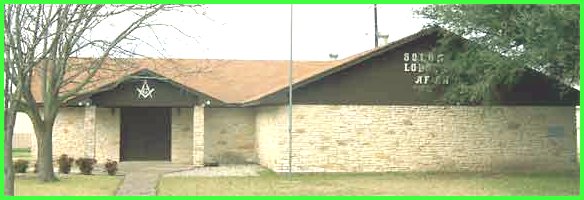
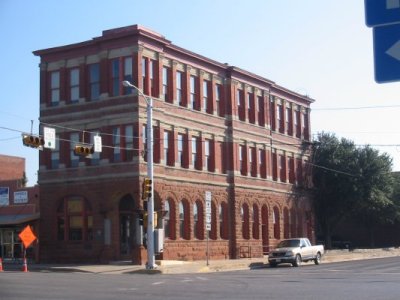
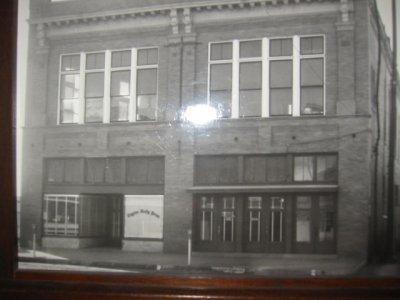
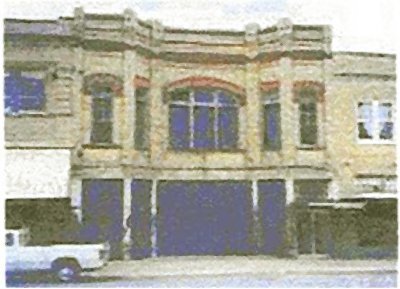

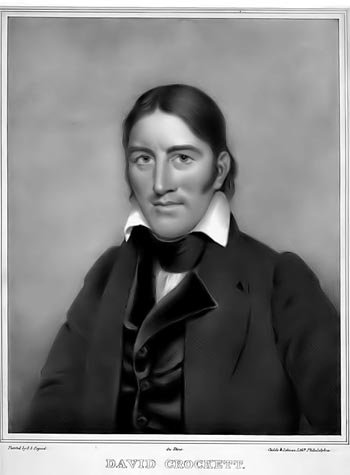
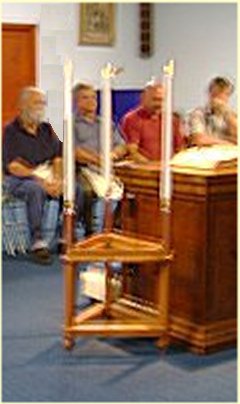
 lightly for them) to pick out words and phrases from the Holy Bible to back up their hate filled messages. But, if you will take note, the following Bible Verses are some that these anti-Masons never quote or read or probably even understood their meaning. Or, they purposely ignore these messages and commandments from Christ so they can sell their own versions of hatred for profit in books, pamphlets and videos, or in an attempt to completely control their followers thinking. ("Controling your followers thinking", hey, isn't that the same definition they use to call Masonry a religious sect.)
lightly for them) to pick out words and phrases from the Holy Bible to back up their hate filled messages. But, if you will take note, the following Bible Verses are some that these anti-Masons never quote or read or probably even understood their meaning. Or, they purposely ignore these messages and commandments from Christ so they can sell their own versions of hatred for profit in books, pamphlets and videos, or in an attempt to completely control their followers thinking. ("Controling your followers thinking", hey, isn't that the same definition they use to call Masonry a religious sect.)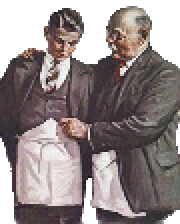
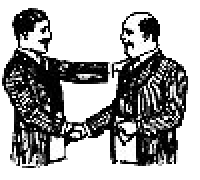
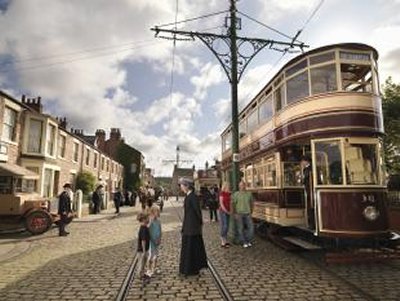
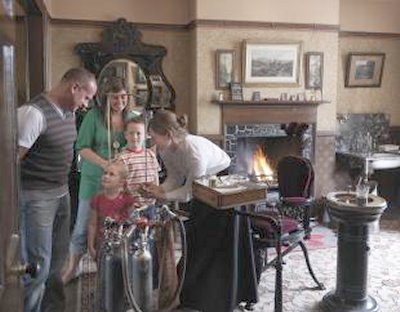
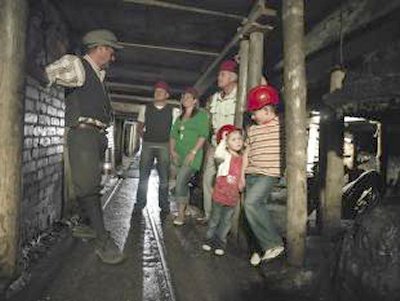
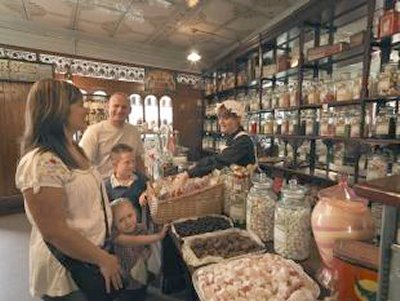
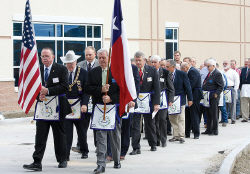

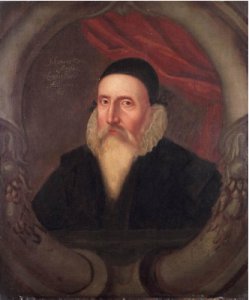

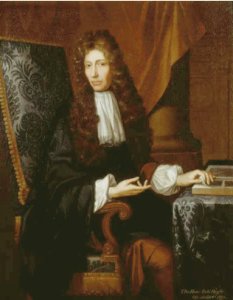
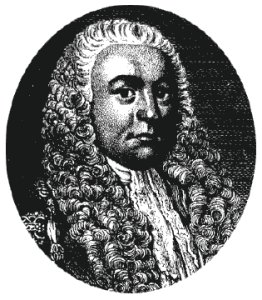
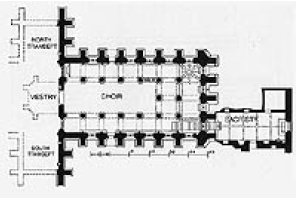
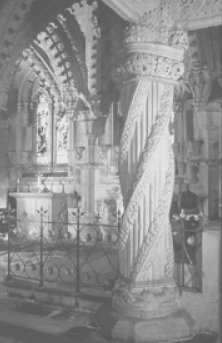

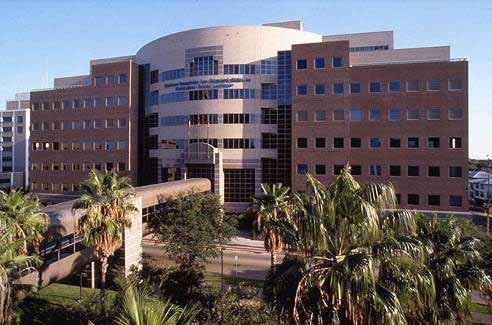
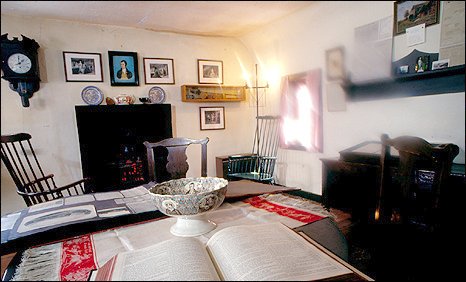
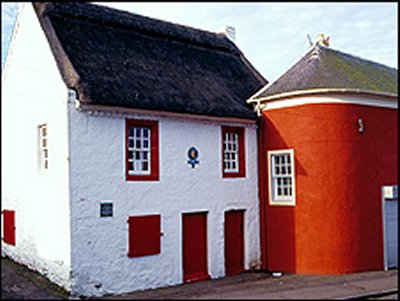
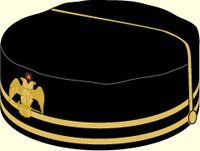
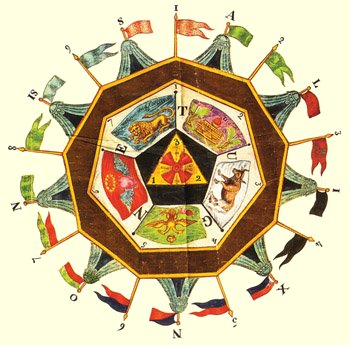
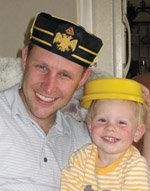

 A bronze statue to Masonic relief sits on the battlefield at Gettysburg to remind Masons and non-Masons alike that even in the midst of a great civil war, Masonic ties are stronger than the hatred of one ideology for another. In the midst of the Gettysburg battle, Confederate General and Brother Lewis Addison Armistead fell mortally wounded on the battlefield. Union Captain and Brother Henry Harrison Bingham, aide to Union General Winfield Scott Hancock heard his cries for help and attended him. On learning Captain Bingham was both a Masonic Brother as well as General Hancock's aide, General Armistead pressed Captain Bingham to deliver his watch and other personal items to his longtime friend, Union General and Brother Thomas Hancock, who was himself badly wounded in the battle. This Masonic benevolence has been captured for all time in a bronze statue showing Brother Bingham comforting Brother Armistead as his life slips away. Armistad-Bingham Lodge of Research is named to commemorate this event.
A bronze statue to Masonic relief sits on the battlefield at Gettysburg to remind Masons and non-Masons alike that even in the midst of a great civil war, Masonic ties are stronger than the hatred of one ideology for another. In the midst of the Gettysburg battle, Confederate General and Brother Lewis Addison Armistead fell mortally wounded on the battlefield. Union Captain and Brother Henry Harrison Bingham, aide to Union General Winfield Scott Hancock heard his cries for help and attended him. On learning Captain Bingham was both a Masonic Brother as well as General Hancock's aide, General Armistead pressed Captain Bingham to deliver his watch and other personal items to his longtime friend, Union General and Brother Thomas Hancock, who was himself badly wounded in the battle. This Masonic benevolence has been captured for all time in a bronze statue showing Brother Bingham comforting Brother Armistead as his life slips away. Armistad-Bingham Lodge of Research is named to commemorate this event.